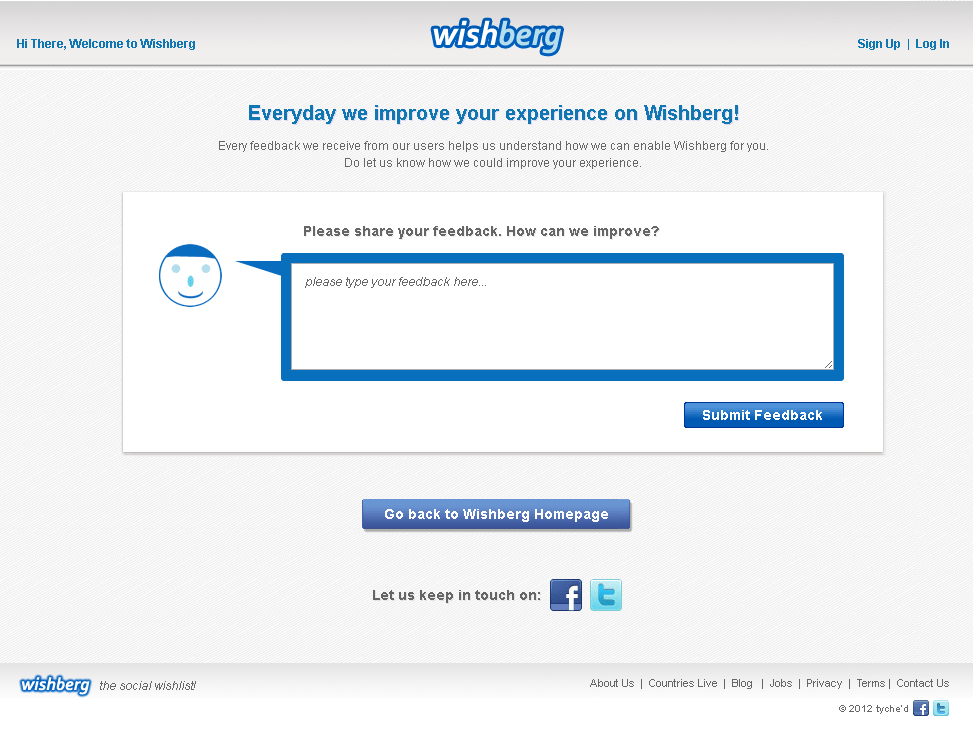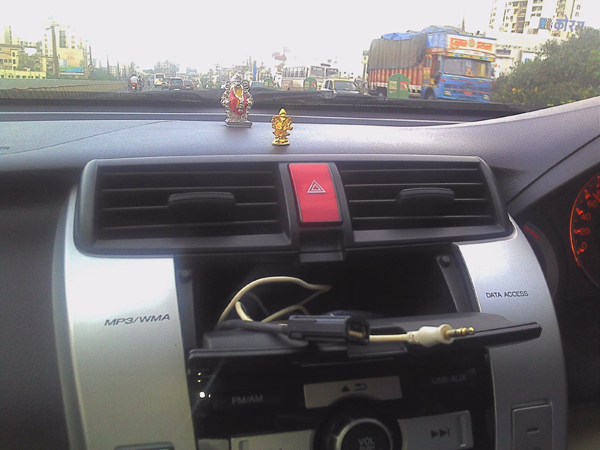Everything! No, that will be a over statement. But it is definitely an integral part of value chain, which is completely ignored by many Ecommerce services in India. Few completely clueless about it, on what product/platform to develop and often mistake UX as product management (which is also an important function in itself).
Ecommerce is (still) hot. In a domain that has many funded companies today in this space; everyone is struggling for differentiation. With an exception of few; to say that we do more products in one category; we have strong vertical focus; our cost of acquisition is low; our seo is better; etc, etc – does not make any sense. These differentiating factors can be replicated overnight. If everyone is on-board same plane, its absurd to claim that someone will reach destination before others.
Rather than subjective opinions about Ecommerce which are in plenty already, this post is specifically targeted towards one aspect – Product. Internet businesses are all about building awesome products backed by a super technology team presented in an intuitive user-experience, nothing else. Its kinda unfortunate to see dollars spent on advertising by companies that have raised investments that continue to run on ready to use Ecommerce platforms installed over-night.
I’d be happy to see fellow entrepreneurs implementing / following basics of ecommerce product management and investors emphasizing focus on product before writing their next cheque for yet another ecommerce investment. On twitter (@beingpractical), I have tweeted number of times about lack of product focus by Ecommerce companies in India – here is why I keep saying that.
.
1. On-Site Search:
The way Google is gateway for searching the web, same applies for on-site search for users to discover the 100,000+ products in catalog. On-site search as a discovery tool should contribute minimum 15% of all sales generated. A kick-ass search algorithm should contribute to 30%-35% of total sales.
On-site search is broken if –
- Total search queries per day < Total unique visitors per day
- 20% of all search queries generated show zero results
- Even a single search query of Top 100 searched keywords shows incorrect result in position 1. For next 400 keywords, in first 5 results.
- Contribution of transactions generated through on-site search is < 15%
- Order Conversion Rate of onsite search is < 2X of site average.
- Option to search on homepage is not prominently highlighted; Take clue from Amazon.com – as you always do 😉
What users search for on your website is the true-indicator of what consumer demand is. Rather than bidding for expensive keywords on paid search, analyze how effectively on-site search queries can be converted to actual sales.
To simply put, if X effort is put behind search engine optimization & Y effort is put behind paid search marketing, then effort spent on on-site search should be X + Y.
.
2. Search Engine Optimization:
Why SEO is mentioned here? Because content experience should be delivered as a part of product. Many Ecommerce sites continue to believe that search-bots transact online and their product pages forcefully include content snippets. Design web pages and build user experience keeping real users in mind and not for search-bots.
SEO should be integral part of product, not random content/text written and inserted across product or category pages merely to increase keyword density of the page. Understand dynamics of content wrt to product in catalogue. There will always be two types distinct type of products – standardized (eg. Canon PowerShot 550D camera) and non-standardized products (eg. Diamond Ring for your Valentine). Focus on each type of products should be separate. (Have explained a bit of how it works in this post – Junglee and how it impacts Indian Ecommerce).
Search Engine Optimization is about playing with Google search index. Don’t overplay with multiple pages, unwanted content – in short don’t spam Google index with similar content. Maintain a healthy product to page index ratio of 3X-5X (indicates if there are 100,000 products in catalog – the search index should not exceed 500,000 in any case).
.
3. Persistent Shopping Carts:
By now persistent shopping carts have should have became a standard, but there are few who are yet to enable this. For starters, there are tons of resources available on the web on benefits of it; for advanced product managers – there is simply much more to do –
- Link shopping cart data persisted with a user session whenever is in a logged-in session.
- Send email notification to users to remind of items still in shopping carts (please don’t spam – just a gentle reminder).
- Over a period of time product prices decrease, once the same happens for a product that is lying in user’s shopping cart inform him via email.
- Abandoned shopping cart is still an incomplete intent, convert that into a sale at a right opportunity.
Enable smart product marketing through a product versioning system. New Apple iPad is a successor to Apple iPad 1 & Apple iPad 2, inform users when next version of product is available. Similarly for Books or Music, when next book by an author is available or even a new sound track by Madonna. Remarket abandon carts when such event occurs.
4. Multiple Sites, User Communication and more.
In recent days, couple of ecommerce services have gone ahead and created specific domain for every vertical they are expanding in. Abc.com for electronics and xyz.com for fashion. These are most pathetic executions of product management since they tend to leverage existing platform for efficiency and end up being perfect playground for chaos.
Here are the most common mistakes that happen (all real experiences) –
- Register at one website, receive welcome message from another.
- Same Order ID sequencing is followed for multiple sites.
- Same database used to store user information – imagine the chaos with operations, customer support, logistics, packing, and do so on – order from abc.com shipped with xyz.com packing. Its a product management mistake, and employees in operations are suffering.
- Using same platform to collect any behavior information (if collected) for all sites. All algorithms will work incorrectly, expect Apple iPad recommendations to include a T-Shirt or even a Diamond Pendant. To patch up with a fix will lead to further complications, cause basic data collected itself is incorrect.
- All email sender names, communication, notifications, marketing messages, are mixed up.
5. Deals to Product sales; expanding to new category.
Many deals sites have pivoted to pure play ecommerce or with every passing month ecommerce services move to a new product category. To use same catalog or database structure is the simplest thing to do, but in order to really conquer every new category or verticals, some focused effort is required.
There is a huge difference between selling a travel coupon and selling a complete travel package. To win in every category some focused effort is required, which typically takes a backseat once launch target dates are set and to meet them the team ends up utilizing the same platform used to sell iPad, Spa coupon or travel package.
6. Controllable v/s Non-Controllable Factors.
Their is a weird assumption with few ecommerce companies that product management is limited only to consumer facing aspects – like website or mobile app. Its not, let me explain with an example.
Recently ordered an product from an site, its order id was 20579512UE82852111. First reaction – even morse codes are easy to decipher! Of all the calls received on customer care, 95% are order related queries. Just imagine the situation of consumers trying to communicate an 18 digit order id in variety of Indian accents. Complete chaos! There are bounds to be mistakes in communicating leaving room for multiple mistakes. A simple product management mistake leads to an exponentially higher average handling time per customer at its call center and increased hold time for customers wanting to connect.
Controllable factors like number of transactions, quality of search, payment gateway approvals, cart improvements, etc should be measured in improved efficiency of funnel & micro-funnels (explained further) conversion rates; while uncontrollable factors which are mostly about logistics, customer support, operations, COD operations, repayments/refunds, etc should be measured in amount of time saved.
7. Micro-Funnels:
For every Ecommerce service, the only one determining factor to look at how efficient its transaction process is the conversion funnel ratio. Only few players have actually gone ahead and have started measuring performance of micro funnels in an matrix format per product vertical or category.
A conversion funnel cycle is typically Visitors > Product Pages > Added to Cart > Payment Page > Order Confirmation page.
Micro funnels typically mean building such funnels under each of the following 3-4 criteria –
- By Traffic source: Natural Traffic, Natural Search, Emailers, Affiliate Marketing, Paid Search, Social Media, etc
- By On-site properties: Search, Categories, On-site promotion banners, Product Recommendations, etc
- By Product Categories: Fashion, Electronics, Health, Books, etc
Deep dive in data, 1% improvement at any stage of any funnel – will significantly improve volumes of transactions. Keep constructing micro funnels, they are fun and they are plenty more – by transaction size, payment types, and so on. In addition to dull excel sheet reports that have number of transactions / avg ticket size / gross merchandize value – look at such micro funnels data. If you have $100 to spend, it will tell you where exactly to get $200 returns.
Label your weekly friday reviews as Funnel Fridays!
8. Payment Gateways:
Payment Gateways or Logistic services are usually most blamed in this country as hindrances to growth of Ecommerce services. About two years back just before the ecom boom started, I wrote a note about – “How Reserve Bank of India can facilitate ecommerce and online transactions in India“. Not much has changed, and Cash on Delivery became the default payment mechanism.
Order rejection rates on transactions processed through payment gateways successfully are < 5%, in most of the cases only if incorrect product is shipped or there is a physical damage. If 100 orders are shipped, 50 are pre-paid transactions and other 50 are COD, on an average between 20-25 will be returned. The operational cost involved in managing COD orders will be close to 2X of pre-paid transactions, dissatisfied customers not accounted for.
Product Managers, make payment gateways work. There may be no science to this – but work with multiple payment gateways. Alternate the transaction flow between them and figure out the best time, best payment gateway from time to time. When payment gateway transaction fails, then offer Cash on Delivery or payments by Cheque.
Take clues – Number of transactions for online recharge services for prepaid mobile services are on increase; they allow users to only pay electronically through either credit cards or net-banking. Then why not for Ecommerce services? This is the same mobile subscriber base living in missed-call economy and maintaining average balance of less than INR 100.
9. Cash on Delivery and Logistics:
Since the last point discussed on Cash on Delivery, this comes next.
A strange equation about COD is, if an additional convenience charge between 25 to 30 INR if levied on all transactions below the avg ticket size of Ecom service, their entire cost of COD operations tends to break-even (Try this with historic order data, the number will be close). Maybe Cash on Delivery should be the last attempt to acquire a customer instead of first motivation to transact. But this does may not happen in real world, so COD is the biggest USP of this business now.
For any post-paid order (read COD) that is delivered within 48 hours of order, rejection rate is less than 10%. COD order delivered after 7 days of transaction, rejection rates might be as high as 70%. Product Managers need to find out smart ways to make this complete process efficient to ensure 90% of deliveries within 72 hours, this includes –
- Maintaining dual address (work / residence) of users to ensure prompt delivery.
- Call / SMS / Email notification before delivery to ensure user keeps the said amount ready.
- Maintain performance of COD acceptance or rejection rates by users / pin codes / and logistic partner; shuffle logistic partners by performance for every delivery location. Some logistic partner will always deliver better than other for every pin-code. Find them and route more deliveries to them.
- Extend this to pre-paid orders as well.
- Work closely on technology with logistic partners that ensures quick reverse logistics, which is the biggest challenge in operations and also nightmare for customers.
10. Track Performance of every Property owned:
Heard of an website called – milliondollarhomepage.com? Have similar approach about every pixel on homepage.
Go insane about about deriving value of every homepage property (search, banners, browse, featured products, etc) similarly as retail outlets do about shelves – sale per shelf. Once every homepage property is labelled similarly, figure out its value based on transactions/revenue generated per day, get the average value of sale generated per property on homepage. More microfunnels to manage for homepage.
Shuffle between product categories, price range, images, product offer text, etc for every property. Understand distribution of transactions by every property, gather such information in logs, mine data and productize this marketing strategy – strive for efficiency.
11. Affiliate Marketing. Show Respect and build this Channel.
There are only few categories that have a lower acquisition costs, but with the amount of competition coming up in every horizontal / vertical segment – this is bound to increase with time. The average customer acquisition costs for any Ecommerce website in India today varies between 400 INR to 1200 INR, one company acquires customers at 2000 INR to sell them – pen drives worth 399 INR.
In between all this, there are few really effective business channels like affiliates, price comparison portals and so on who really work hard and acquire customers by sending qualified shoppers. Most of them have extremely poor affiliate commission structures which are typically between 100 to 250 INR, much lower than cost of acquisitions on paid search or display advertising. Show respect, they are acquiring customers at a cost that is usually less than half of the site average.
Nurture this channel and make them available with a series of affiliate tools similar to the Amazon Affiliate program. This channel is currently under-developed / un-explored, any ecommerce service providing better affiliates product and awesome commission structure can actually take a big leap ahead!
12. Email Marketing
I had once tweeted this – ‘Buying from you is not my consent to SMS/Email spam’ mentioning few brands I admire. Later Hursh (Cleartrip) wrote an interesting piece about it later on their blog – ‘Why we don’t spam our customers.‘
Email Marketing has a diminishing value proportionate to the rate of emails per user per month. Though an important channel for traffic/transactions; if abused, at a certain period of time the cost involved in sending a mail to million subscribers will be much larger than the revenue earned from the email campaign itself.
Product Managers need to put in rules in place to ensure that the marketing activity remains contextual to users interaction on the site and also user is sent the emailer at a certain time where buying intent by user still holds true. Ensure adequate gaps (of about 30 to 45 days) between two marketing emails if sent to same user. Consumers behave much like us, will they really buy watches or sunglasses on a daily basis? Find a context!
13. Product Recommendations
Unlike what many think, the amazing product recommendations of amazon cannot be build overnight with correct context. It requires tons of data which can be only generated post millions of transactions, product views, buying patterns and an platform that really enables up-selling of products.
There are different aspects of an Amazon Product page – which can be observed on any one of its product page. The experience is so delivered that it brings multiple benefits to Amazon – highly content rich pages that affects search engine traffic positively (as mentioned in point earlier, productize the SEO content), Promotions available at that time, Up-selling related products, customer actions, product details, description, related purchases, customer reviews and related products.
Enough to satisfy consumer of all his questions, alternatives and options. All packaged beautifully with appropriate content on a page with multiple opportunities to up-sell or cross-sell. Ain’t that good? See how far it seems to go. Love data, insights and bring it to users, don’t be satisfied with plain jane product pages.
14. Behavioral Data Trends and creating Marketable Insights.
This completely comes from the stuff we build at my previous stint with Ohana Media – capabilities to track every user interaction, generate tons of data and segment that into trends and actionable data. (They call it bigdata these days).
A brief explanation of the same is on this presentation – Audience Clusters & Intent Analytics and also another deck that Shameek presented at Adtech 2012 on Online Marketing Success Strategies for Ecommerce companies.
While at Ohana, we had pitched this platform to one Founder & CEO of an funded Ecommerce company. Answer – “Not sure if this stuff works.” Result, we went ahead and signed an exclusive non-compete deal with their competitor and today their cost of acquisition has reduced by more than 50% in less than 12 months. Another Ecommerce founding team we proposed replied, “Cannot use this product. Data collected by this platform resides on the same server as our competitor.” That stumbled us, don’t 1000s of Ecommerce sites run on Amazon instances (every customer had his data stored in private cloud). Having a product person driven by data & analytics is essential in every founding team or should be one of the first people to hire in senior management.
Discover cross-channel marketing efficiency like –
- Natural search keywords converting are automatically bid for on paid search.
- Automatically decrease bids when competition stops bidding or lowers their bids.
- Email intent data is used to remarket category banners on-site
- Search to Display remarketing
- Onsite customization based on users previous intents.
- This list could be endless…
Respect data and figure out capabilities to increase its efficiency across medium. Same users reaches you through multiple doors – Search, Paid Search, Social Media, Display, Emails etc. Unless you are able to gather his intent-cycle over a period, it will be impossible to have efficiency in marketing. Every 1% increment on top of funnel conversion may lead to 2X at its bottom.
Full Disclosure: I led product & marketing for Ohana Media in my earlier role. Its founder Shameek Chakravarty is on Board of Advisor of my startup. Both presentations linked are in public domain.
15. Team Structure
Since last point touched based on the people aspect, want to extend it bit beyond the purview of direct product management. While one big mistake could be not having a product focused person in founding team or in the senior management team – other simply is how teams are structured within an organization.
Have noticed that in multiple organizations, the User Experience, Product Team, Technology and Online Marketing teams working in silos heading in different directions. It will be subjective to mention what is a right structure and there is no thumb rule to decide that – one common criteria should be love for data, numbers, & micro funnels. Stitch it all together and build an rocking platform.
This pointer is a filler, 15 is a round number. Nevertheless, message is important.
Concluding Notes –
There are couple of posts I wrote earlier which might be also in line for Ecommerce services –
Signing off. Oh yes – a $75+ Mn valued company is still running a Facebook advt since its day of launch (about 2 years back) promising a Blackberry for INR 1999. Its CPC must be 8-12 INR and I have clicked on it innumerable times trying to find out that phone. Online marketing inefficiencies? – maybe will reserve that for another post. This one is already too long.
Going back, product / platform is the core differentiation for every Ecommerce service. Love data and believe in numbers. Every aspect of ecommerce business can be divided into two aspects – controllable (managed internally) and uncontrollable (managed externally like logistics, operations, etc); measure efficiency of everything that is online with improvements in micro funnel conversions and everything that is offline with improvements in time.
Want more inspirations – for online look west (at Amazon); for offline look east (at Taobao).




